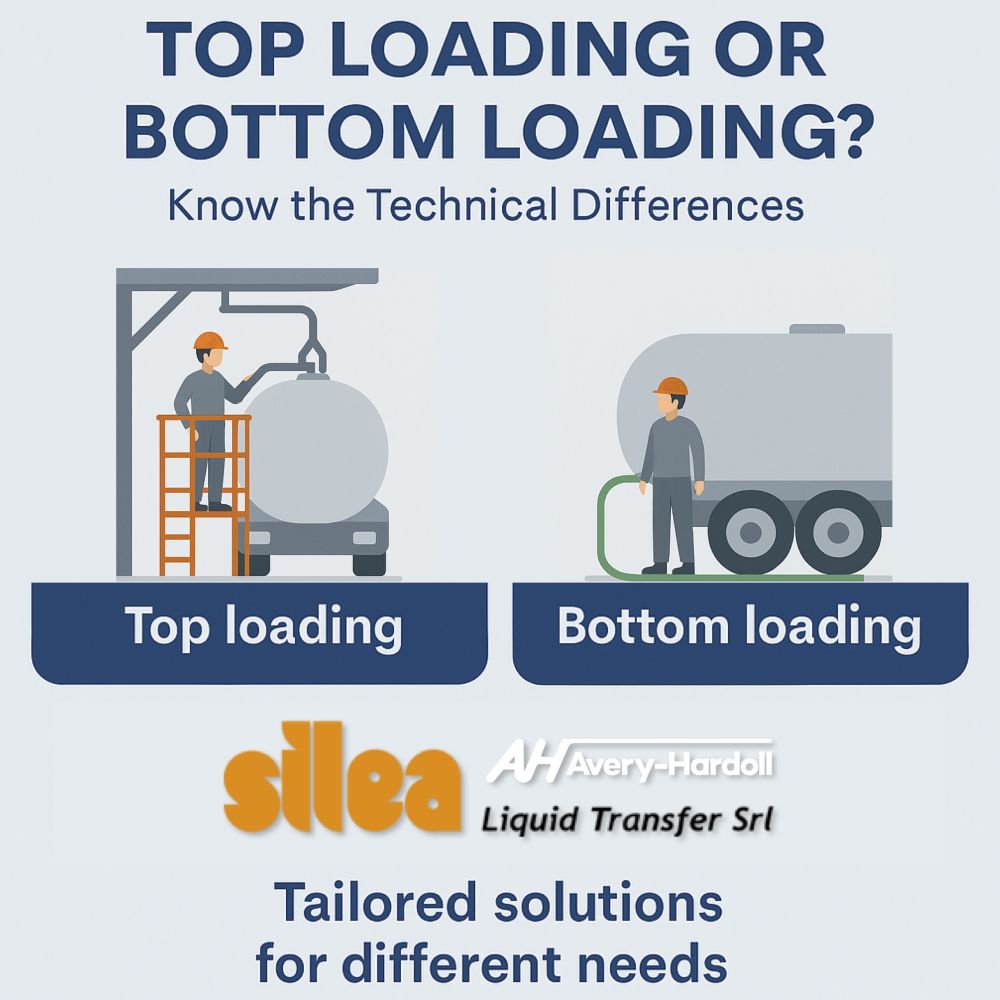16/05/2025
TOP LOADING OR BOTTOM LOADING?
In the field of industrial fluid transfer, the loading method is a crucial choice that can impact various aspects: from operator safety, to plant configuration, and even the type of product being handled.
Top loading: the most traditional solution
This is the method historically used in the Oil&Gas sector for loading hydrocarbons, and it is still widely employed today. The operator accesses the top of the tank and inserts the loading arm through the manhole.
This configuration, which is simpler to implement, presents some critical issues - mainly related to working at height and vapor exposure - which can be easily managed through the use of access ladders equipped with safety cages and vapor recovery systems.
Top loading is also common in the chemical and food industries, where - especially in the latter - it is often preferred not only due to hygiene regulations, but also because of the current standards of tanker trucks. In many areas, there is still no standardization for bottom loading, which requires compatibility between the female coupler of the loading arm and the male connection on the tank. Conversely, all tankers are equipped with top manholes, making top loading a more immediate option.
Bottom loading: safety and technology
Now the standard in the Oil&Gas industry - thanks to the introduction of the API RP 1004 regulation - bottom loading is gradually gaining traction in the chemical sector as well, when the nature of the transferred product allows.
This method allows the operator to work safely from ground level, eliminating vapor exposure by creating a closed-loop system using a dedicated vapor recovery line.
It’s a safer and more ergonomic solution, but it requires tanks equipped with compatible bottom connections. Additionally, if converting from a top-loading system, plant modifications may be needed to adapt to the new setup.
The type of product makes the difference
• Gases, for example, are loaded exclusively from the bottom due to technical reasons, mainly related to pressure.
• Liquids such as gasoline, diesel, and mineral oils can be loaded both ways, but modern facilities tend to favor bottom loading for improved safety and operational efficiency.
• In the food & beverage sector, however, top loading is still the preferred method - both for hygienic requirements and due to the lack of a widespread bottom loading standard.
Two options, one tailored vision
Both loading methods remain valid. The best choice depends on the type of fluid, operational context, and required safety levels.
This is why Silea develops and offers tailored solutions for both top and bottom loading, with a constant focus on quality, safety, and innovation.






